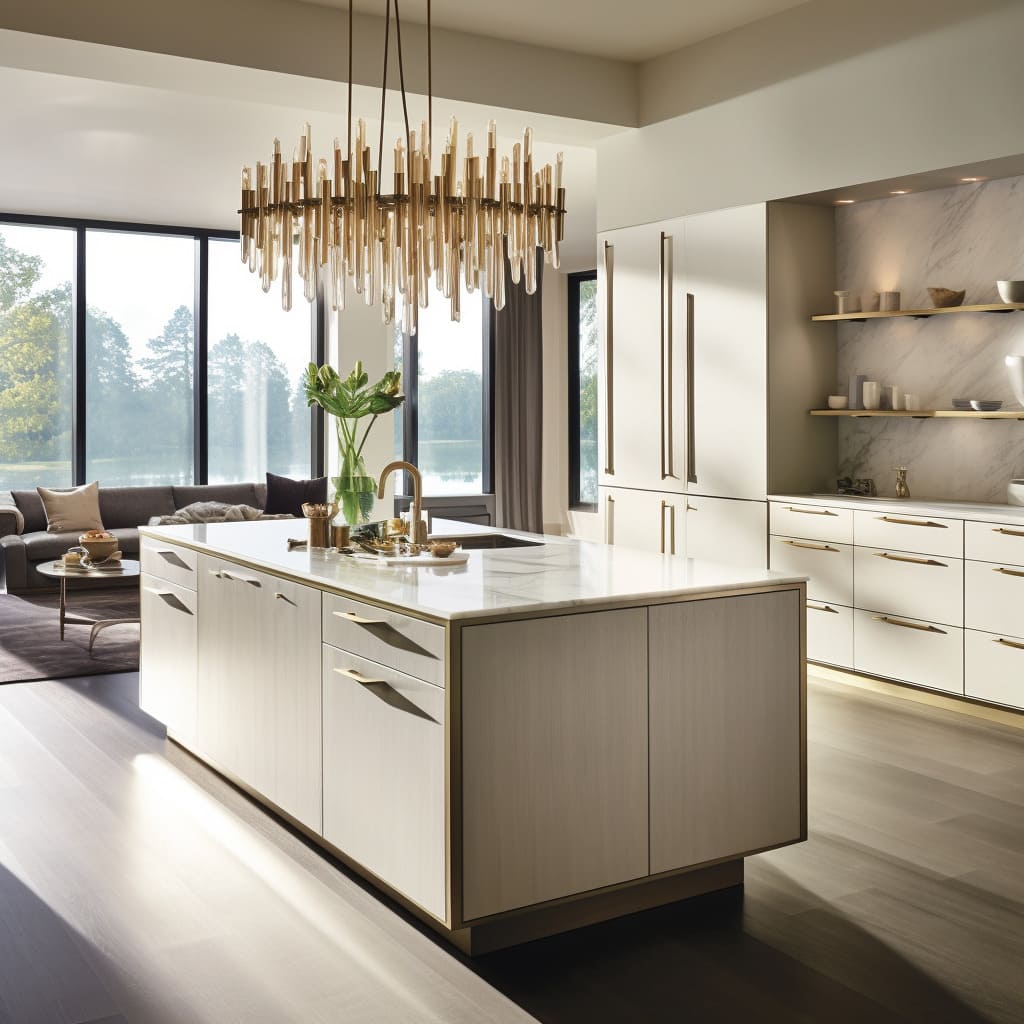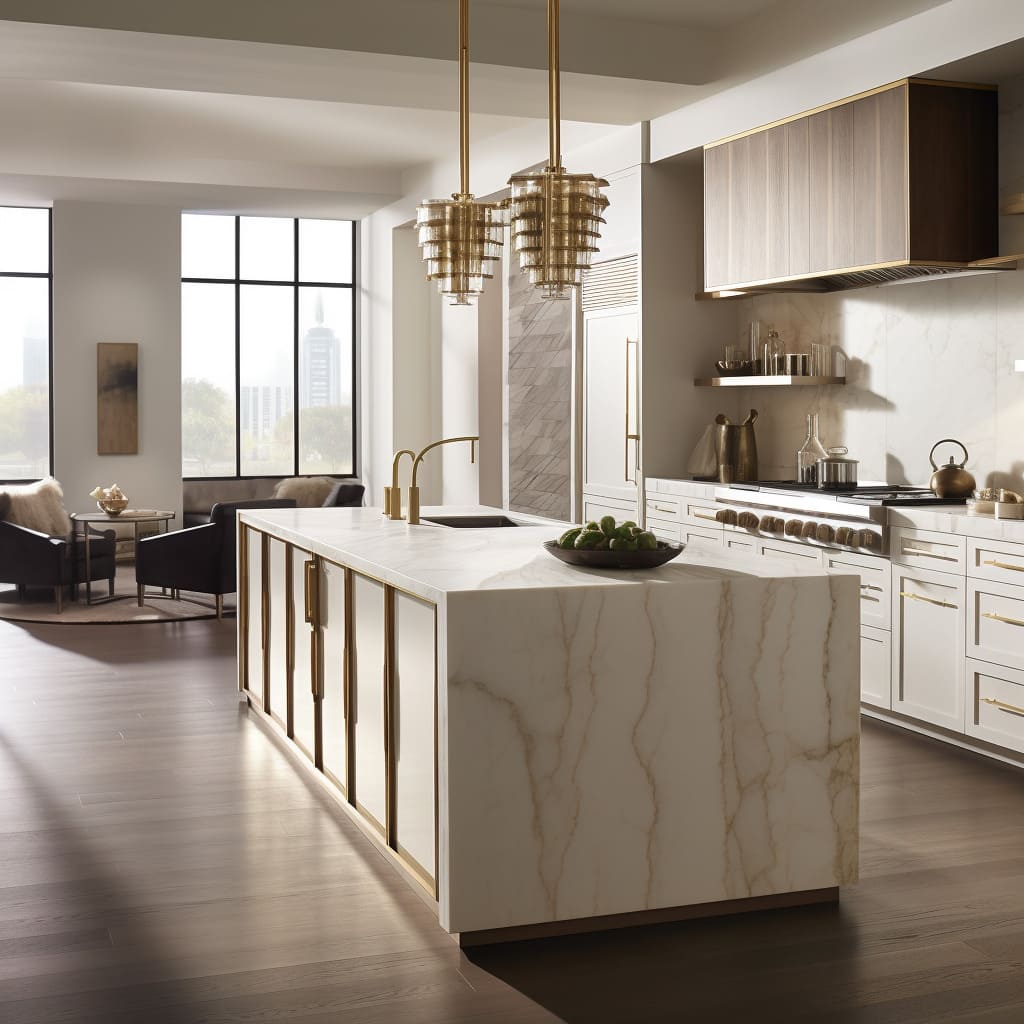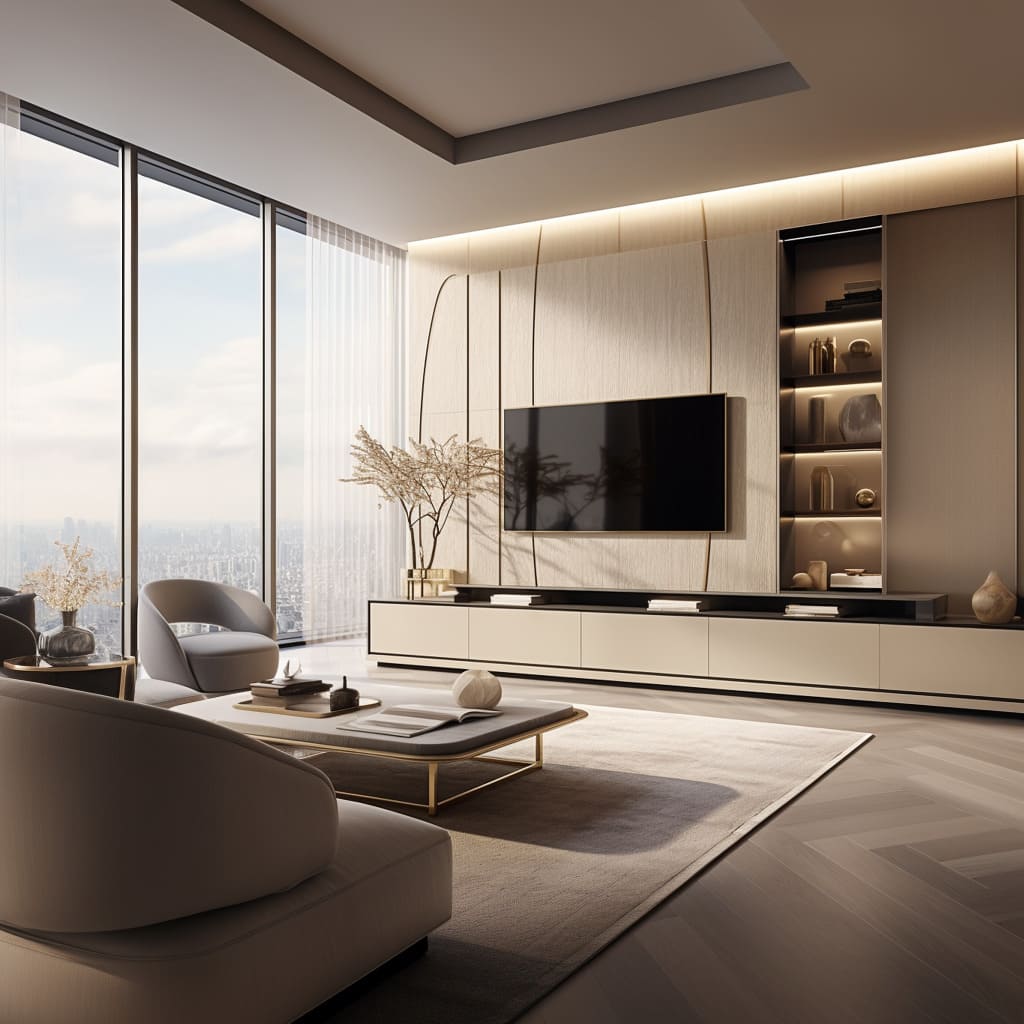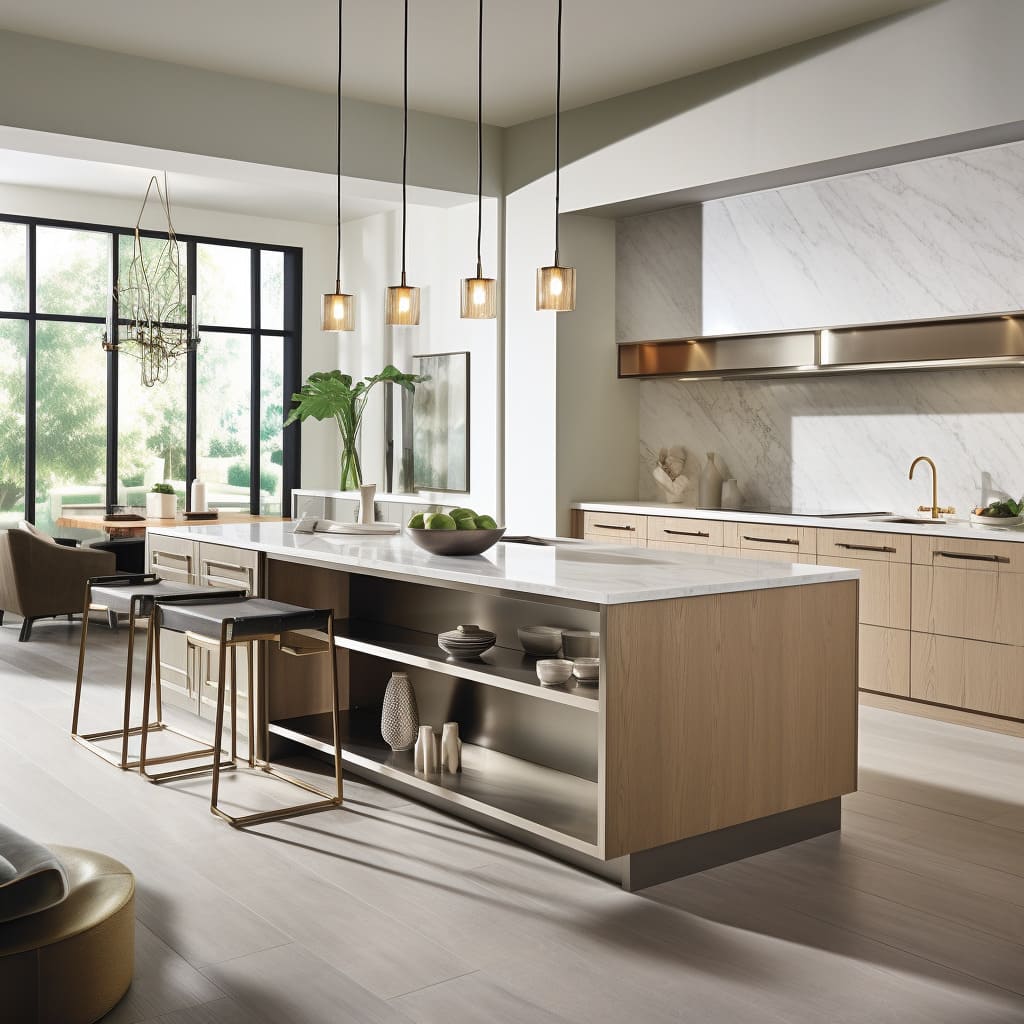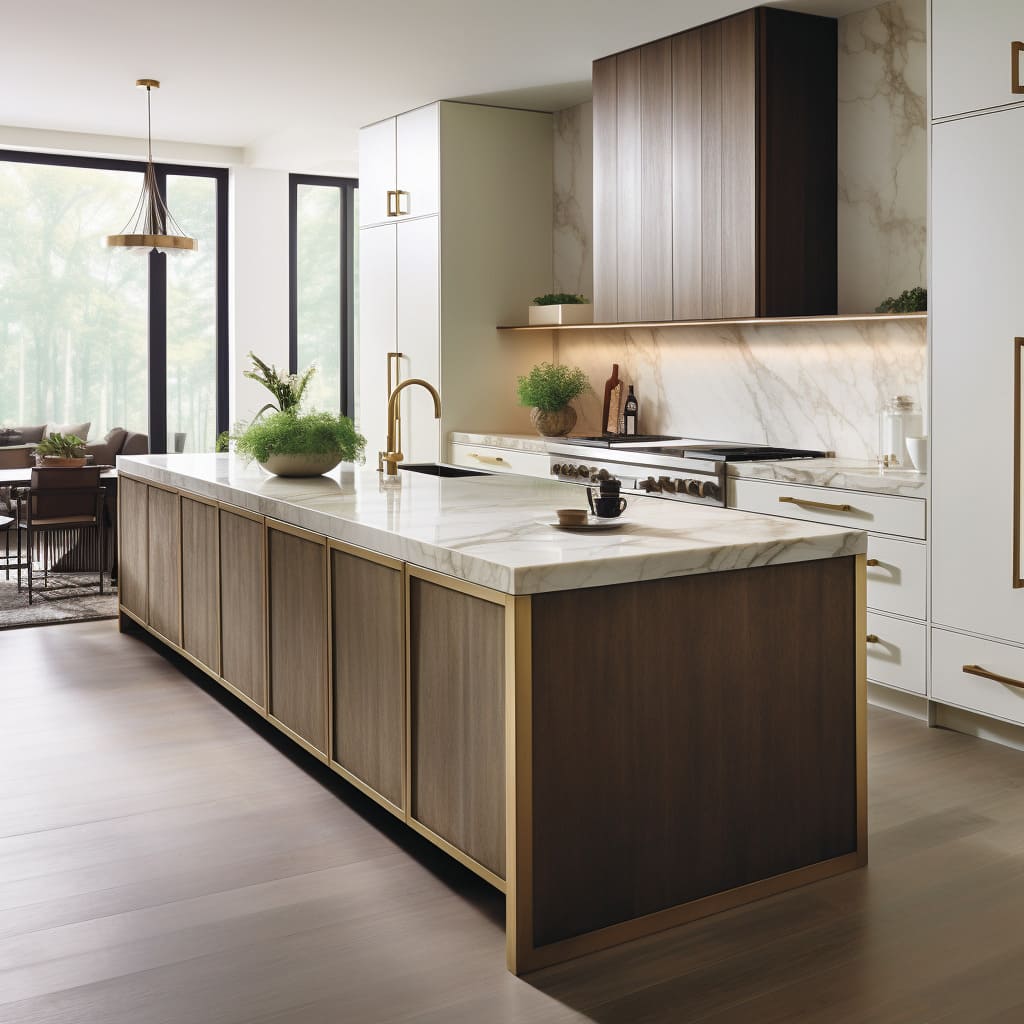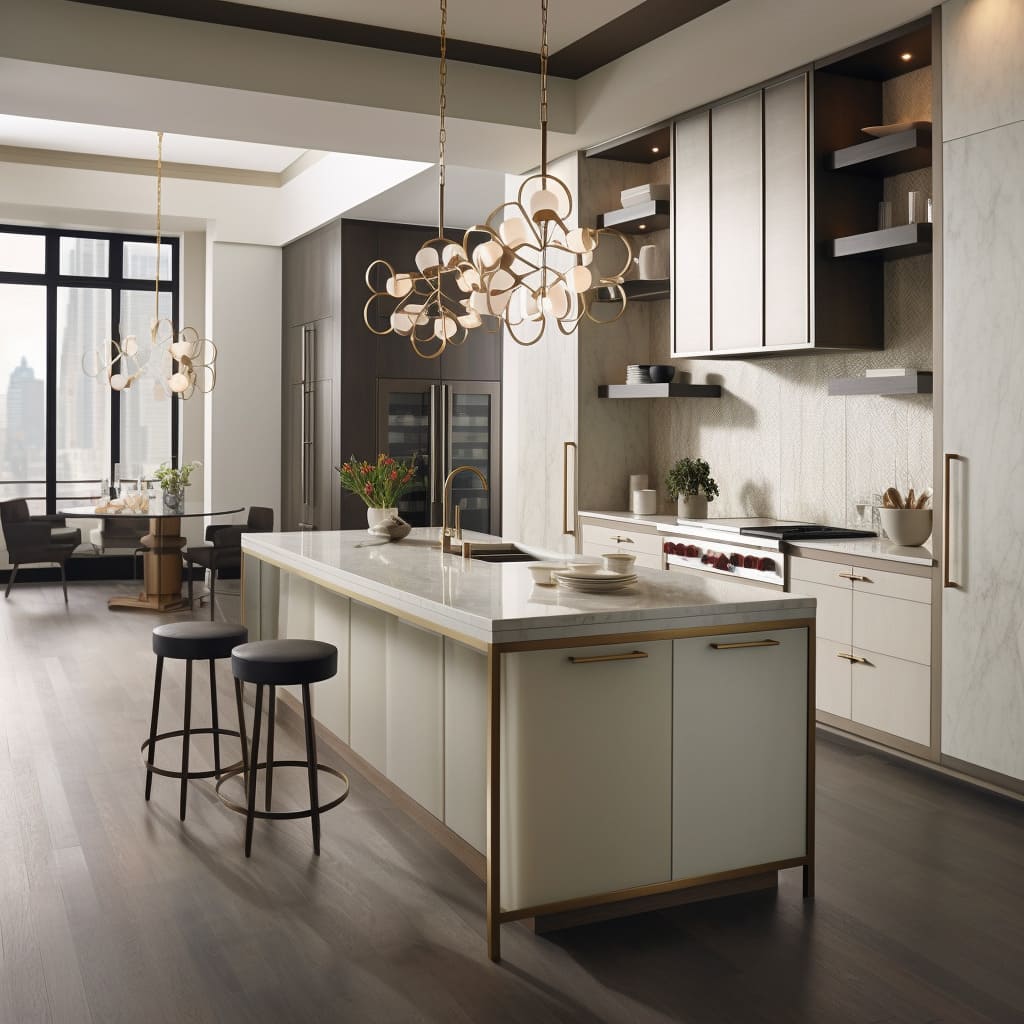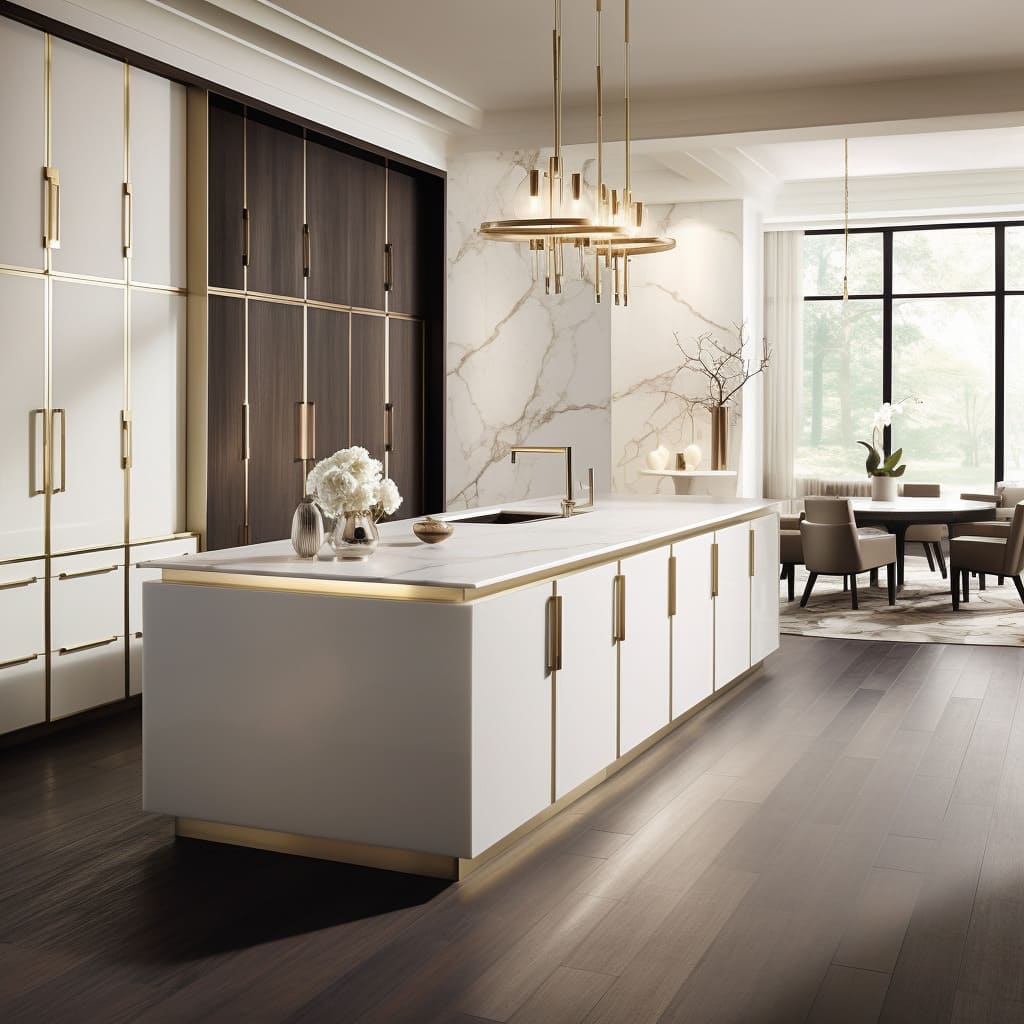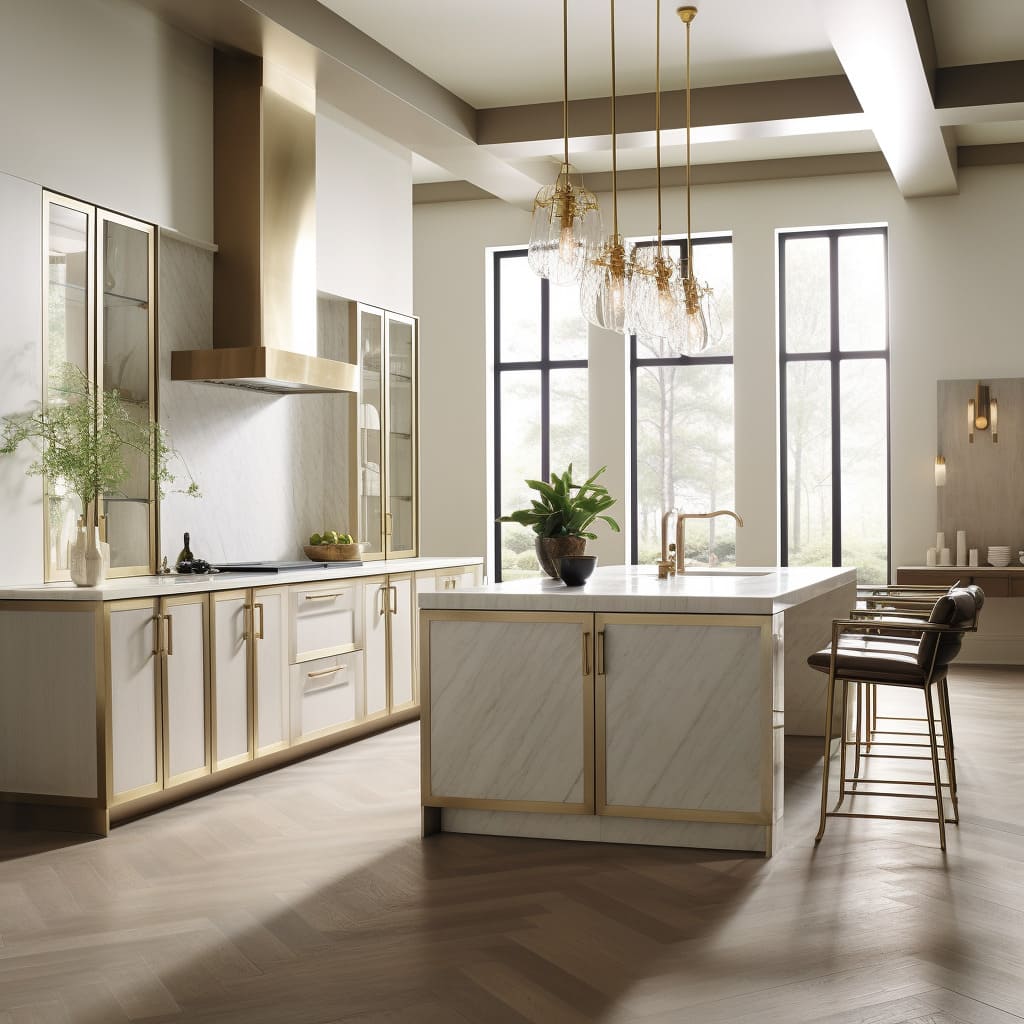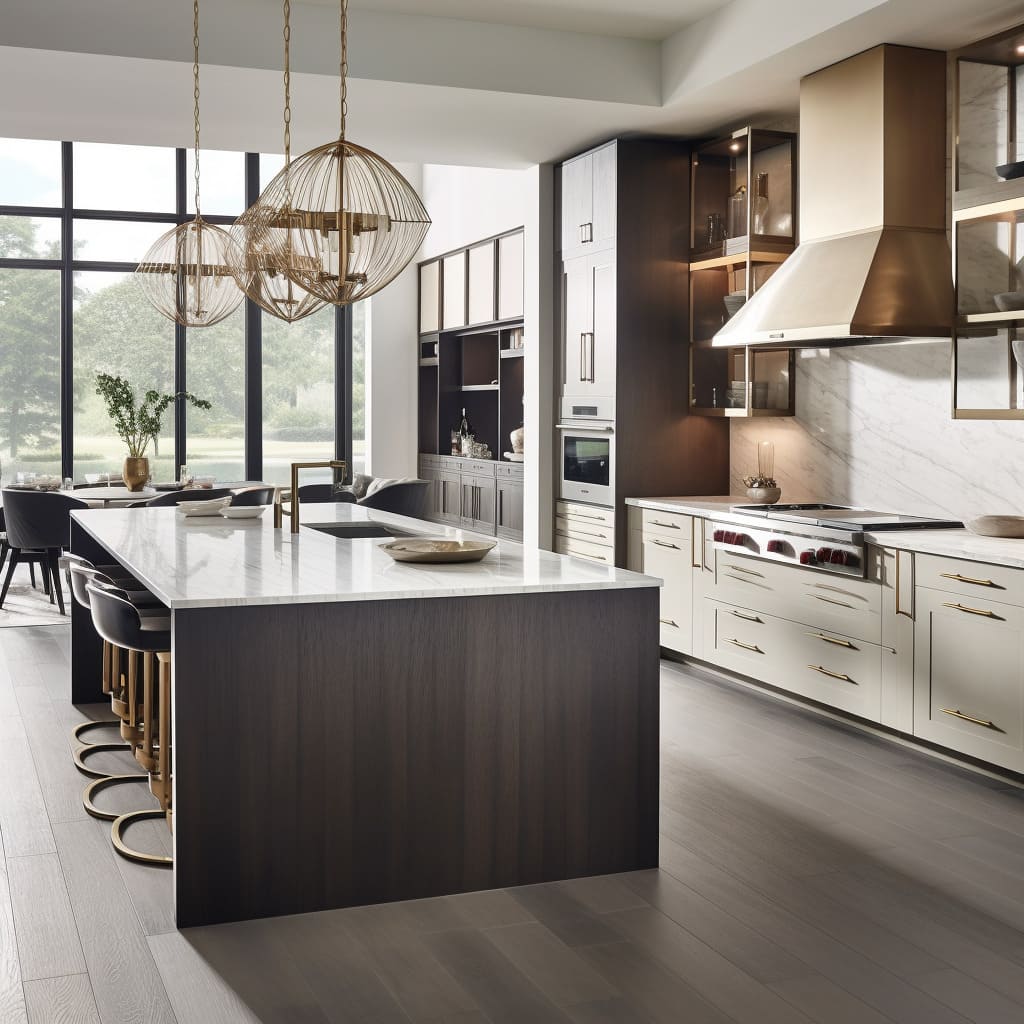The transitional style kitchen serves as the centerpiece of the home, seamlessly blending the rich, comforting allure of traditional aesthetics with the crisp, uncluttered essence of modern design. It’s a sanctuary where families unite, culinary creations come to life, and cherished memories are forged.
In this versatile design style, the coziness and intricate craftsmanship of classic kitchen designs are married to the streamlined, minimalist approach of contemporary trends, fostering a space where every detail harmonizes with the next.
Timeless Elegance in Cabinetry: The Best of Both Worlds
The cabinetry in a transitional kitchen is a testament to the timeless beauty of tradition coupled with a modern edge. White cabinets, with their elegant raised-panel doors, exude a sense of enduring grace reminiscent of a bygone era.
This nostalgic charm is revitalized with contemporary flourishes—think brushed gold hardware that catches the light, elongated pulls that invite a gentle touch, and subtle knobs that add a dash of modern sophistication.
The result is a kitchen that pays homage to the past while firmly rooting itself in the present.
The Heart of the Room: The Kitchen Island as a Central Hub
In the heart of the transitional kitchen lies the island, not merely a feature but a dynamic focal point around which daily life revolves. It could be the rich, dark wood base forms a striking contrast with the pristine white marble countertop, a visual metaphor for the blend of old and new that defines transitional design.
This island isn’t just for aesthetics; it’s a versatile stage for cooking, a welcoming spot for informal meals, and a communal space for conversation and companionship. Outfitted with convenient built-in appliances and surrounded by chic bar stools, the island stands as a beacon of functionality and style.
Lighting: The Jewelry of the Kitchen
Lighting in a transitional kitchen goes beyond mere functionality; it’s a statement of style, akin to exquisite jewelry that completes an outfit. The pendant lights that dangle gracefully above the island—with their transparent glass and delicate gold accents—serve not only to brighten the space but to embellish it.
The Art of the Backsplash: Weaving Texture and Design
The backsplash in a transitional kitchen is where artistry meets utility. A great option is a white marble, with its potential for intricate herringbone patterns, introduces a textural element that complements the kitchen’s modern sleekness while paying tribute to the ornamental aspect of traditional design.
It’s a practical masterpiece, guarding against the wear and tear of culinary endeavors while elevating the kitchen’s design narrative.
Flooring: The Foundation of Design
The flooring in a transitional kitchen sets the stage for the entire design. Dark hardwood floors lay the groundwork, their warmth providing a visual counterpoint to the airy lightness above.
The herringbone arrangement echoes the backsplash, unifying the space with an undercurrent of sophistication. The floor becomes more than just a surface—it’s a central element of the design story, anchoring the kitchen in both comfort and style.
The Finishing Touches: Details That Bind the Space Together
Transitional kitchens are distinguished by their attention to detail—crown molding that traces the ceiling’s edge, coffered ceilings that add depth and dimension, and expansive windows that usher in sunlight, framing the room with views of the world outside.
These elements are the finishing strokes on the canvas of the kitchen, each contributing to an overarching sense of balance and beauty. They ensure that while the kitchen boasts modern amenities, it also retains the classical grace that gives it a timeless appeal.
Transitional style kitchens stand as a testament to the enduring allure of design that can traverse the tides of time. They offer a sanctuary that is at once sophisticated and inviting, an elegantly appointed space that never sacrifices warmth for style.

